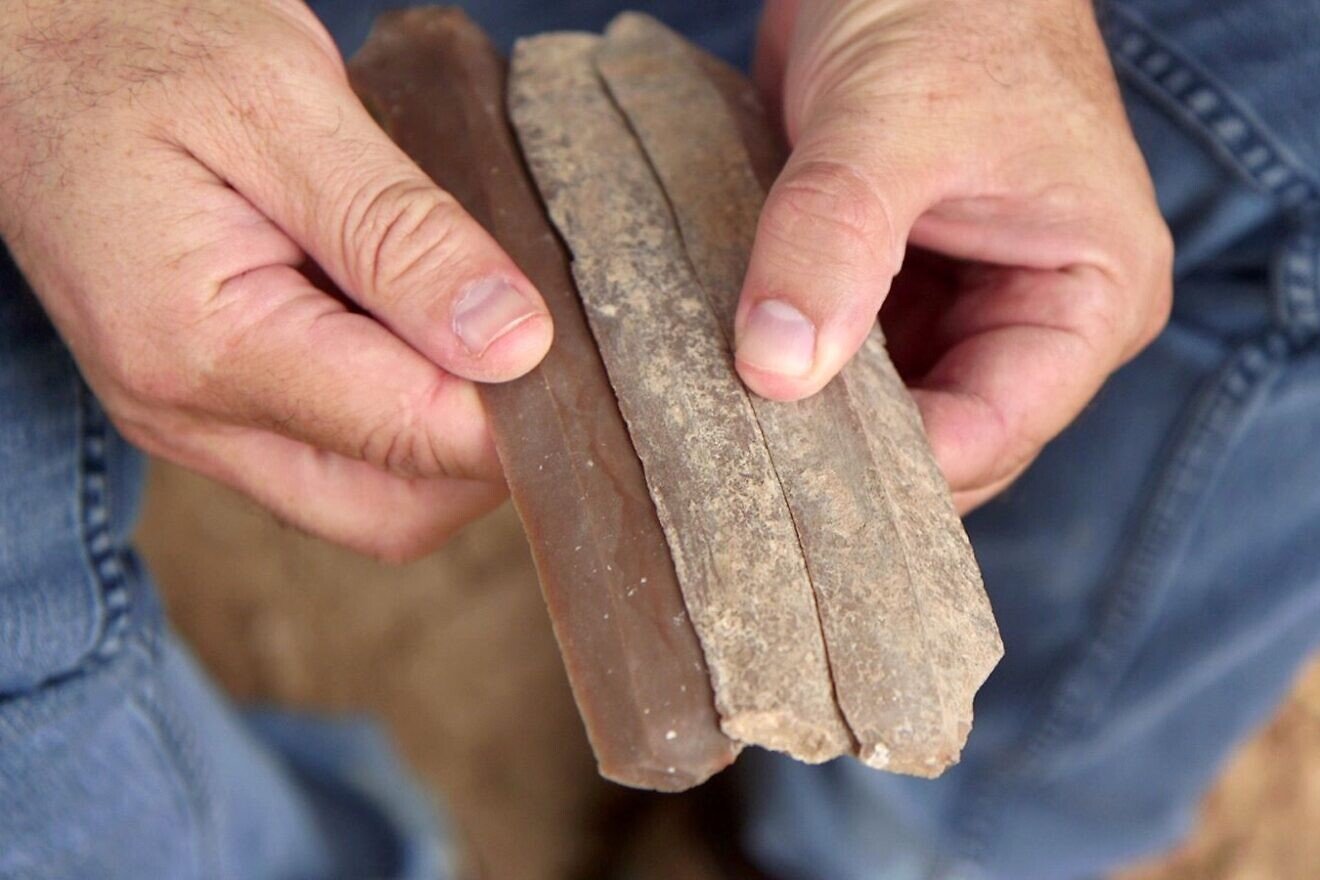Flint blades uncovered in an ancient Early Bronze Age blade production workshop during excavations in southern Israel in the city of Kiryat Gat. Credit: The Israel Antiquities Authority.
A 5,500-year old workshop for the production of stone blades has been unearthed in the southern Israeli city of Kiryat Gat, the Israel Antiquities Authority announced on Monday.
Evidence of an advanced industry was found, including long flint blades and the stone cores from which the blades were made, according to the IAA statement.
The findings were uncovered in a large IAA salvage excavation at the Naẖal Qomem site (also known as Gat-Govrin, Zeita), funded by the Israel Lands Authority, before the construction of a new Kiryat Gat neighborhood named Carmei Gat.
“Although evidence of the Canaanite blade industry has been discovered in the country’s center and north, there are almost no known workshops for their systematic production,” said excavation directors Martin David Pasternak, Shira Lifshitz and Nathan Ben-Ari, according to the statement.
“The discovery of a sophisticated workshop indicates a society with a complex social and economic structure already at the beginning of the Early Bronze Age. This is an important find in that it deepens the understanding of both the beginnings of urbanization and of professional specialization in the Land of Israel—phenomena that led to the establishment of large settlements and that catalyzed the creation of new social structures,” the researchers added.
According to prehistorians Jacob Vardi and Dudu Biton, the blades’ manufacture required “an extremely high level of expertise. Only exceptional individuals knew how to produce the Canaanite blades.” The site was “clear evidence” that local society was organized and complex already at the onset of the Bronze Age, with professional specializations.
The site was an active settlement for hundreds of years, from the Chalcolithic period through to the Early Bronze Age, the excavation directors went on to say.
The settlement extended over half a kilometer, and included hundreds of underground pits, some lined with mud bricks, they added.
“These pits served a variety of purposes: storage, dwellings, production crafts and cultic/social rituals,” according to the researchers.
The blades themselves were used for cutting and butchering, and as harvesting tools, like sickle blades. The production technology was extremely advanced, the statement read, and included the use of a kind of crane to exert precise pressure on the flint.
Humans in the Early Bronze Age mostly used tools made from natural raw materials like flint, bone, stone and ceramics. The Canaanite blades were the main cutting tools of the region, according to the IAA.
Vardi noted that the site in modern-day Israel served as a center from which Canaanite blades were distributed in trade across broad regions in the Levant.
The rare findings will be on public display at the Jay and Jeanie Schottenstein National Campus for the Archaeology of Israel in Jerusalem this summer.
Source: JNS


































